Seodong Park (서동공원)
8.7 Km 31880 2024-04-07
41-14, Godo 9-gil, Geumma-myeon, Iksan-si, Jeonbuk-do
+82-63-859-3818
Built alongside the Geumma Reservoir, Seodong Park traces its origins to ancient records from the 600 AD with historical figures (Princess Seonhwa and Seodong, King Mu). More than 100 works of art can be found in the park, including twelve Chinese zodiac animal statues and sculptures of Princess Seonhwa and Seodong. The central plaza features a statue of King Mu, and various amenities such as the Mahan Museum, a children's forest playground, a picnic area, a fountain, and a riverside plaza enrich the experience for visitors.
Geumma Reservoir (금마저수지)
8.7 Km 4178 2024-04-07
Donggodo-ri, Geumma-myeon, Iksan-si, Jeonbuk-do
+82-63-859-3818
Looking towards the south from the top of Mireuksan Mountain, one can see Geumma Reservoir. The reservoir is shaped like the Korean peninsula. Hence it is also referred to as Jido Yeonmot, or Map Pond. The terrain is especially beautiful when viewing it through the fog in the early mornings.
The water comes from Mireuksan Mountain, ensuring a steady supply of water throughout the year. There are no factories or other contaminants nearby so the water quality is of the highest grade. Near the reservoir, one can find Seodong Park and Mahan Hall. Seodong Park is a sculpture park displaying various sculptures such as a bronze statue of Baekje’s King Muwang of Baekje and a statue of Seodong’s Princess Seonhwa. Mahan Hall showcases the lifestyle and culture of Mahan, a tribal confederation during the Samhan period. The park also features various facilities such as an observatory, fishing spot and a promenade.
Wanju Samrye Culture & Arts Village (완주 삼례문화예술촌)
8.7 Km 3319 2024-04-07
81-13, Samnyeyeok-ro, Wanju-gun, Jeonbuk-do
+82-63-290-3862
Samrye Culture & Arts Village is an art village also referred to as "Samsamyeyemimi." Once used as a granary and an official residence during the Japanese administration, it has now become a village of art. The village consists of Design Museum, Visual Media Art Gallery, Kim Sang-rym Carpentry Shop (Wood Works), and Book Museum and offers a variety of programs during exhibition events and art festivals.
Iksan Seodong Festival (익산서동축제)
8.9 Km 24455 2024-04-07
41-14 Godo 9-gil, Geumma-myeon, Iksan-si, Jeonbuk-do
+82-63-843-8817
Iksan Seodong Festival is held in Seodong Park in Iksan. Iksan is home to the love story of Prince Seodong, who would later become King Mu, for Princess Sunhwa. The festival, which started as the Mahan Folk Festival in 1969, was renamed in 2004 and celebrates the 1400-year history of the Baekje Kingdom.
Wanggung Dawon (왕궁다원)
10.4 Km 0 2024-04-07
21-5 Sagok-gil, Wanggung-myeon, Iksan-si, Jeonbuk-do
Wanggung Dawon is a hanok café built in the 1800s. It was once the residence of Song Byungwoo, a rich person in the region, and has been operating as a traditional tea house since 2008, preserving the charm of the old hanok. The café offers a wide variety of teas, with the signature menu item being ssanghwatang (herbal tonic tea), a traditional Korean beverage. Ssanghwatang is made with ingredients such as jujube, ginseng, and chestnuts, known for its warming properties.
Korea Expressway Corporation Arboretum (한국도로공사수목원)
10.6 Km 43231 2024-05-28
462-45 Beonyeong-ro, Deokjin-gu, Jeonju-si, Jeonbuk-do
+82-63-212-0652
The Korea Expressway Corporation Arboretum is located in Jeonju and operated by Korea Expressway Corporation. The arboretum was opened to counterbalance the environmental damage caused by the construction of expressways. As such, the arboretum maintains and promotes the conservation of many beautiful flora from across the country.
Jeonju World Cup Stadium (전주월드컵경기장)
11.5 Km 17762 2024-04-07
1055, Girin-daero, Deokjin-gu, Jeonju-si, Jeonbuk-do
+82-63-239-2546
The Jeonju World Cup Stadium was built with tradition in mind as its roof and stands are designed with an image of traditional fan, the pillars in sotdae design and cables in 12 strings of gayageum.
Hotel One [Korea Quality]호텔원[한국관광 품질인증]
14.1 Km 0 2024-04-07
21-13 , Ogong-ro, Wanju-gun, Jeonbuk-do
+82-63-225-9333, hoteloneinnocity@naver.com
Hotel One is a chain business hotel in Jeonju Innovation City, Jeollabuk-do, with a number of government offices, public facilities and tourist attractions nearby. Public transport links are good, with Jeonju Bus Terminal and Jeonju Station not far away. The hotel provides room service and other standard hotel facilities, and there are meeting and seminar rooms on site. Hotel One is designated as a safe lodging place for women and families.
Palbok Art Factory (팔복예술공장)
14.3 Km 0 2024-05-02
46 Guretdeul 1-gil, Deokjin-gu, Jeonju-si, Jeonbuk-do
Palbok Art Factory was founded in an old cassette tape factory twenty-five years after it went out of business with the advent of the CD. The factory aims to spread art and artistic creativity to the world, much like the previous cassette tape company did at their peak in the '80s.
Iksan Ipjeomni Ancient Tombs (익산 입점리 고분)
14.8 Km 7115 2024-04-07
80, Ipjeomgobun-gil, Iksan-si, Jeonbuk-do
+82-63-859-5875
The Iksan Ipjeomni Ancient Tombs are a group of ancient Baekje-era tumuli located 100 meters above sea level on the northeast brow of Chilmokjae Hill in Ipjeom-ri, Iksan-si, Jeollabuk-do. The burial ground covers an area of more than 18,520 square meters and is officially listed as Historical Site No. 347. To date, a total of eight tumuli have been excavated, all of which are chamber tombs.
Surprisingly enough, the tombs were first discovered in 1986 by a high school student. While digging for arrowroot, a young man from a local high school found some pieces of gold that resembled a hat. He quickly notified the authorities and it was soon discovered that the pieces of gold were in fact valuable ancient artifacts. An emergency excavation was conducted and the eight tumuli were uncovered, but unfortunately all of the tumuli except Tomb No. 1 had been severely damaged. Tomb No. 1, which is still in relatively good condition, boasts an entrance measuring an impressive 16 meters in x_height and 2 meters in x_width.
Inside the tombs archaeologists found valuable relics from the Baekje dynasty including earthenware, jewelry (a gilt-bronze hat, gold earrings, glass beads, etc.), harnesses and ironware. Given the shapes and the types of the pieces found, historians estimate that the tumuli were built in the 5th century. Since the gilt-bronze hat is similar in shape to those found in Japan, experts believe that there was an active exchange between the Baekje people and the people of Japan.
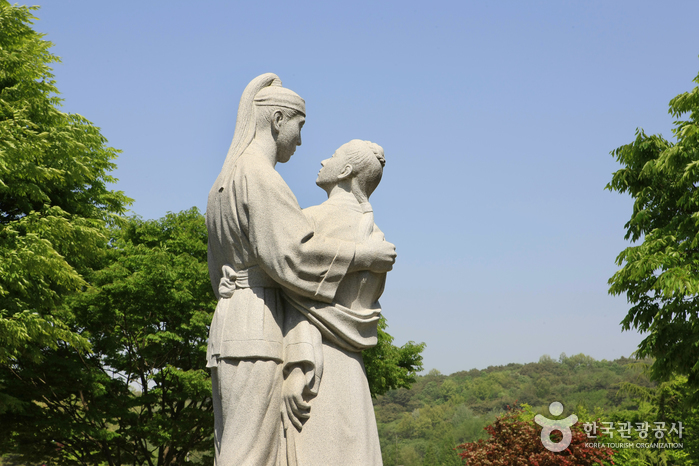
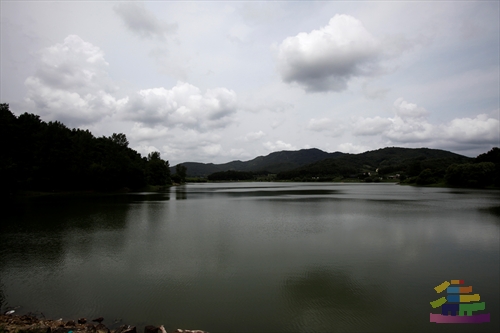

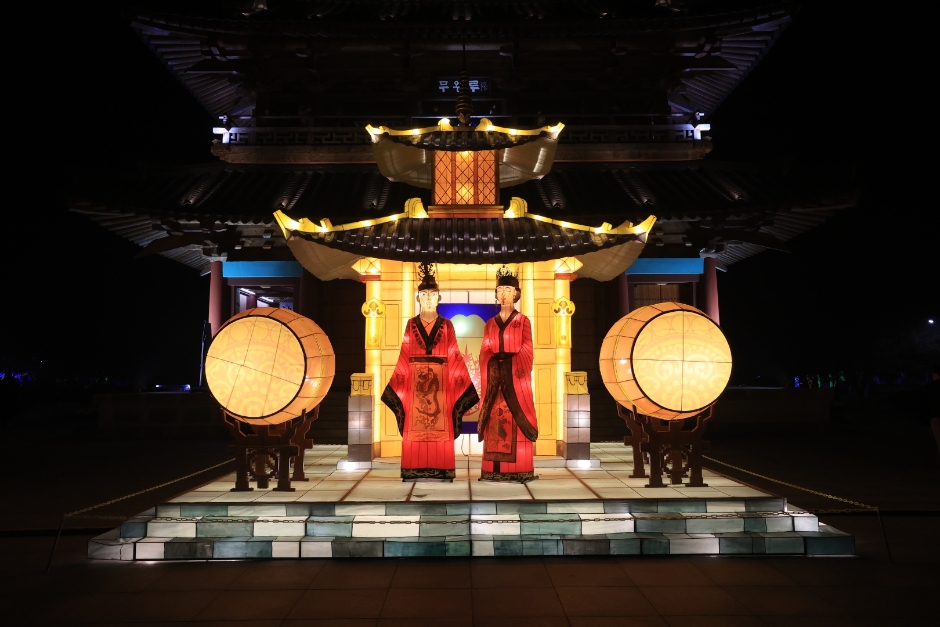
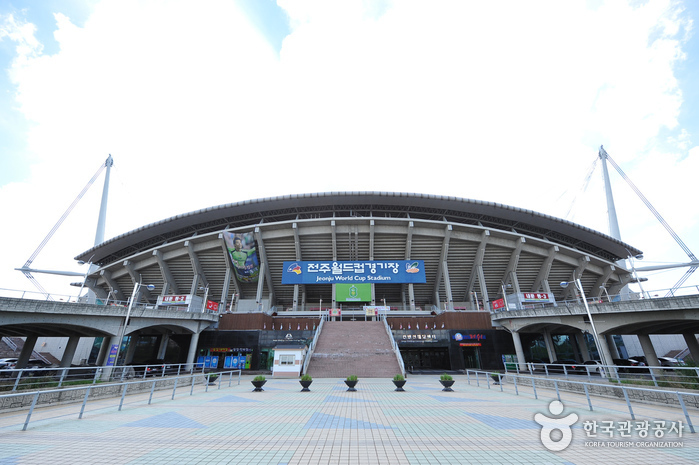
![Hotel One [Korea Quality]호텔원[한국관광 품질인증]](http://tong.visitkorea.or.kr/cms/resource/42/2949342_image2_1.jpg)
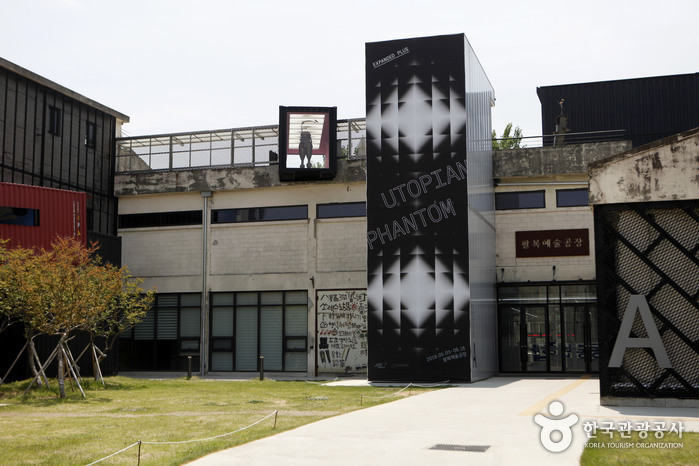
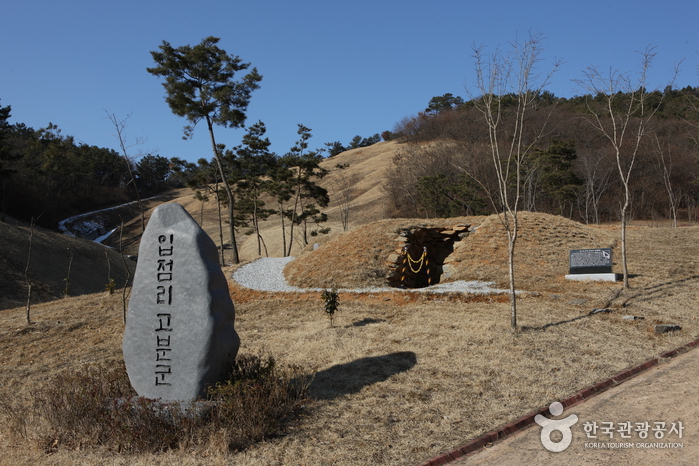
 English
English
 한국어
한국어 日本語
日本語 中文(简体)
中文(简体) Deutsch
Deutsch Français
Français Español
Español Русский
Русский